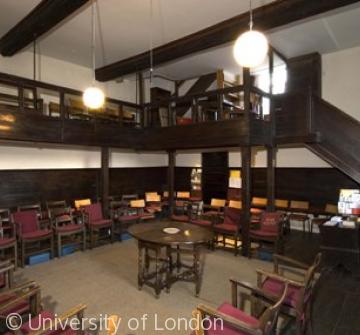Friends' Meeting House, Pytts Lane

One of the earliest Dissenting groups in Burford were the Friends or Quakers. As early as 1662 a meeting was broken up and seven men were imprisoned.
Prominent in the movement was Thomas Minchin, a Burford mercer who was repeatedly excommunicated and imprisoned, and had his goods confiscated. In 1688 he bought land in Witney Street for a permanent meeting house, giving £383 towards its construction. The existing building, entered from Pytts Lane, was probably erected around that time, despite the date of 1709 (perhaps recalling a remodelling) on the gateway. The Minchins remained important figures in the local Quaker community. As late as 1800 an obituary of Mrs Elizabeth Minchin called her a 'faithful and indefatigable preacher amongst the Quakers'.
The Pytts Lane meeting house, with its rubble-stone walls and stone-slate hipped roof, is a simple expression of vernacular construction. It epitomizes Quaker principles, which not only eschewed all ritual and hierarchy but rejected indulgence in dress, language, and daily life. Its front elevation has a central doorway with tall sash windows to either side. Inside is a gallery to south and west, altered in the 1730s perhaps for women Friends: in the 18th century the movement recognised the role of women, and separate spaces were created for their meetings. Sometimes these were in upstairs rooms separated by shutters from the main space, so that women could choose whether to be private or to participate in the main meeting. The elders’ stand or bench was removed in 1947, when the movement adopted a more egalitarian layout for its meetings.
In the 19th century Burford's Quakers suffered mixed fortunes. The meeting enjoyed a modest revival from the 1890s, but by 1932 attendance had slumped, and a suggestion was tabled for renting the meeting house to the Youth Hostel Association. Fortunately the building was retained, and by 1955 a revived meeting attracted ten or more members. Six years later this had increased to 41. Happily the building is still used for its original purpose.
Photo by Mike Hesketh-Roberts, English Heritage
See: C Stell, Nonconformist Chapels and Meeting Houses: Oxon. (1986), 172-3; B Hartley, Burford’s Quaker Meeting House (1999); Buildings List (Images of England no. 421463); N Pevsner, Buildings of England: Oxfordshire, 509; R Moody, A Thousand Years of Burford (2007), 46; J Besse, Collection of the Sufferings of the People called Quakers (1753), 569-74; Oxford Journal 10 May 1800.
Content generated during research for the paperback book 'Burford: Buildings and People in a Cotswold Town' (ISBN 13 : 9781860774881) for the England's Past for Everyone series

